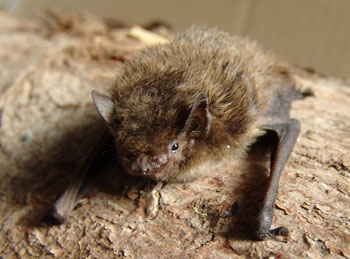
New Surveillance System Reveals Endangered Animals
Biologists can now get a much more accurate picture of endangered bats, birds and insects. TEK-researchers are behind a new recording system which reveals previously unknown details about the bats.
Gone are the days where biologists spent several days in a tent with binoculars and infrared cameras to try and get an overview of the prevalence of endangered animals. Professor John Hallam from the newly established Center for BioRobotics is behind a new surveillance system, which for two months has constantly recorded bats on the roof of a garage at the University of Southern Denmark – and the system has proven so efficient that it has unveiled two bat species which the researchers did not believe lived in the area.
- A growing concern regarding endangered species has created a need for a system to effectively monitor the endangered animals. Bats are endangered and they live right in our back garden here at the University of Southern Denmark. Simultaneously, the university is about to undergo a major reconstruction with plans of tripling the area. Therefore, it is obvious to look at how this affects our bats, explains John Hallam from the Maersk Mc-Kinney Moller Institute.
Automatic processing
The researchers placed the new recording equipment approximately 5 meters above the ground on top of a garage building where bats often fly by.
- We got two months of continuous recordings from the site. It would be impossible for a person to sort the recording, but an automatic processing of the recordings identified 115,000 sounds from bats. By using the automatic processing it is only a small part of the recordings which require human treatment, he explains.
This is the first recording system which can monitor an area of inspects, birds and bats this efficiently. And it could have major consequences for how effectively biologists can determine the prevalence of animals in the future.
Interesting observations
According to bat expert, Annemarie Surlykke, professor at the Department of Biology, the recording equipment on the garage has already revealed interesting things:
- Among other things, we have recordings from two species of bats right here in the area around the University, of which one is observed once and the other which has not been recorded in the area before. It is very interesting that we, with continuous monitoring, can find species that are often overlooked when conducting samples, as is the case in most studies, she says.
The two species are Nathusius' pipistrelle (Pipistrellus nathusii) and the pond bat (Myotis dasycneme).
Monitoring new construction projects
John Hallam and Annemarie Surlykke would like to complete a long-term monitoring of bats in the area around the University of Southern Denmark where in 2015 a new hospital is to be build.
- There is great attention to restoration projects, but what about the opposite? What happens when nature is involved in the construction? Is it possible to build “green”? And does it work? We would like to follow the wild before, under and after a major construction project and we can use the new technology and the bats in the area as a method of measurement, the two scientists say.
Depicted on the picture is the Nathusius' pipistrelle.
For more information contact:
Professor John Hallam: E-mail: john@mmmi.sdu.dk Telephone: 6550 3546.